To complement the launch of their new sunlight readable digital signage enclosure range, which can integrate screens featuring anti-glare and anti-reflective technologies, Armagard explains the differences between the two technologies.
Anti-glare and anti-reflective technologies are often mistaken as being the same, however, whilst they are both very similar in what they are attempting to achieve, the two solutions use very different methods in order to improve display readability.
Sunlight Readable Digital Signage – Improving Readability
Readability is vital for any outdoor TV display. Anti-glare and anti-reflective technologies represent ways to improve an outdoor digital signage display’s readability. Visual information should be able to be read clearly, quickly & comfortably with minimal strain to the eyes.
Anti-Glare Technology Explained
Anti-glare technology works by dealing with external sources of reflection off a surface – such as bright sunlight – and reduces the effect that these reflections have on the readability of an outdoor digital signage display.
Anti-glare technology reduces external sources of reflection using diffusion (see – Fig 1) techniques to break-up the reflected light off the surface. Diffusion works by reducing the appearance of reflected images, making unwanted images unfocused to the eye.
The overall objective is to reduce the interference of reflected images in order to improve the visibility of the display.
However, the diffusion of light using anti-glare technology leads to the scattering of light rays, resulting in a reflection output of approximately 8%, which can affect screen visibility from certain angles.
If viewing an outdoor TV display ‘straight-on’, visibility remains largely unaffected, but viewing from a 45-degree angle for instance, reflections and glare could be a problem.
Fig 1…
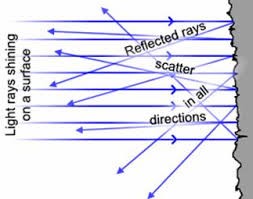
Anti-Reflection Technology Explained
Anti-reflection technology works by bending light through objects, which results in the reduction of reflection across the visible light spectrum. In comparison with anti-glare protection, which reduces reflection output to approximately 8%, anti-reflective technologies can reduce reflection output to as little as 0.4%.
Also, when using anti-reflective technology, total light output from a screen can be increased to 99% [source: tspinc.com].
Fig 2…
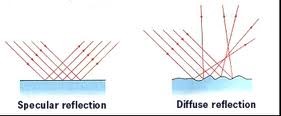
When compared with anti-glare technologies, anti-reflective technologies cause specular reflection (a mirror-like reflection of light from a surface – see Fig 2) to occur. Anti-reflection technologies do not cause the scattering of light rays, resulting in less reflection output and reduced glare.
Therefore, outdoor TV display visibility is greatly improved, regardless of the angle at which a display is viewed.
Which Solution Is Best?
The case for anti-glare
Despite minor flaws with visibility from certain angles, anti-glare technology remains popular because of the cost benefits.
Anti-glare coatings are economical to apply compared with anti-reflective solutions and do reduce the impact of screen glare compared with having no solution at all, even if it’s only up to a certain level.
Anti-reflection solutions are often more expensive so, as a money saving solution, anti-glare is the best option. Due to the big difference in cost, anti-glare technology is used more. Anti-glare is mostly used on computer monitors, mobile devices and indoor & outdoor sunlight readable digital signage displays.
The case for anti-reflective
If cost is no issue, anti-reflection technology provides the best solution for improving screen clarity in bright locations. In the battle for audience attention, screen readability and visibility in bright locations could be the difference in increasing sales and revenues ahead of a competitor.
As a complete solution against reflection and glare problems, the capability of anti-reflection technologies to reduce reflection output to as little as 0.4%, per surface, makes it difficult for other technologies to compete as a solution for reducing the effects of sunlight on outdoor TV screens.
Deciding which solution is best is difficult because different factors affect the decision-making process. As a cost effective solution, anti-glare represents the wisest choice, but as a complete solution, perhaps anti-reflective is the sensible choice.
Armagard Solutions
Armagard manufactures a range of sunlight readable digital signage enclosures, all of which can be integrated with a high-bright screen featuring anti-glare or anti-reflective technology.
Armagard Anti-Glare Solution – Armagard’s sunlight readable, 55” anti-glare totem digital signage unit is a popular purchase amongst Armagard’s customers.
The 55” anti-glare totem digital signage system is an IP56/NEMA 4 rated unit with an integrated anti-glare screen, which can achieve a screen brightness between 2,000 & 5,000 NITS.
The unit remains fully functional in temperatures up to 40oC, without requiring an air-conditioning system. The enclosure can be fitted with a polycarbonate window to which an anti-glare coating is applied.
The unit is commonly installed in locations where direct exposure to sunlight will occur, or in high brightness locations. The 55” anti-glare digital signage totem is perfect for use as an advertising display unit, positioned in places which attract a lot of people.
The main reason for installing this unit is the money saving benefits it brings and the money-making potential it generates.
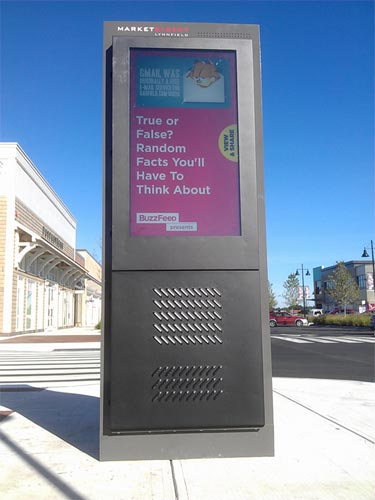
Armagard Anti-Reflective Solution – Any of Armagard’s PDS enclosure range can be fitted with glass screens to which an anti-reflective coating can be applied.
Armagard’s sunlight readable, 72” outdoor high-bright display totem has anti-reflective technology for customers in need of a big advertising display that can withstand the impact of sunlight on screen visibility.
This large outdoor TV enclosure is an IP56/NEMA 4 rated unit with an integrated anti-reflective screen, which can achieve a screen brightness between 2,000 & 5,000 NITS.
The unit remains fully functional in temperatures up to 50oC, without requiring an air-conditioning system.
Investment in a sunlight readable, 72” outdoor high-bright display totem will raise brand awareness, increase sales & revenue, whilst maintaining screen visibility in high-brightness areas, ensuring that you receive a return on your investment plus much more.
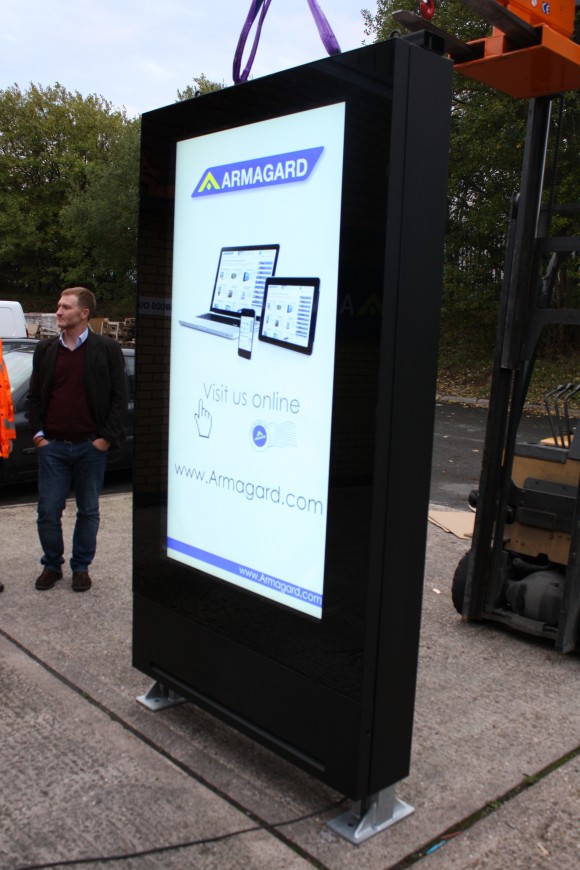






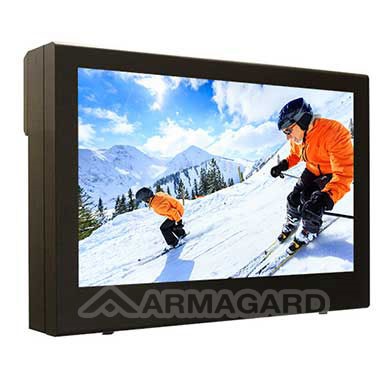
Comments are closed.